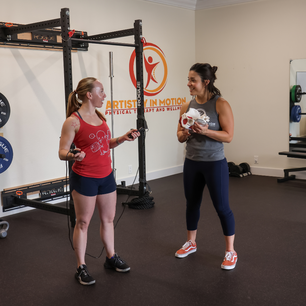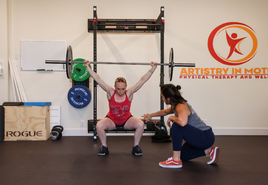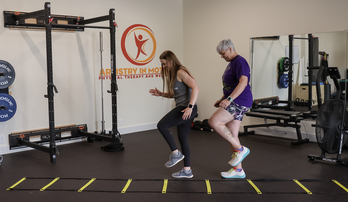If you are a lifter, crossfitter, or competitive athlete, it’s likely that you have either seen someone experience urinary leakage, or you have personally experienced urinary leakage. This is especially common when going for a PR on squats or deadlifts, performing a heavy clean complex, or intense jumping exercises such as double-unders. There are three different types of urinary incontinence, including urge incontinence (a strong, sudden need to urinate), stress incontinence (involuntary loss of urine with physical exertion), and mixed incontinence (having symptoms of both urge and stress incontinence). When you have leakage while coughing, laughing, sneezing, or exercising, that’s stress incontinence. Stress incontinence may also be referred to as athletic incontinence when it occurs only during exercise. While dealing with stress or athletic incontinence is nothing to be ashamed of, it is NOT normal, regardless of how much weight you are lifting.
Unfortunately, the answer isn’t always kegels, or pelvic floor contractions. You can have strong pelvic floor muscles and still experience leakage!
In order to prevent leakage, you need to be able to coordinate contracting your pelvic floor (and no, bearing down is NOT a kegel!!!). When you contract your pelvic floor (or perform a kegel), you should be lifting up through your pelvic floor, not bearing down. Bearing down will put more strain on your pelvic floor and will often contribute to leakage.
Once you can correctly perform a pelvic floor contraction, you need to be able to time contractions with movement. During a “stressful” event, such as a maximal lift attempt, you need to be able to lift up through your pelvic floor.
Your pelvic floor muscles need to be strong enough to match or exceed the load placed through them, just like any other muscles during a maximal attempt lift! If you were performing a maximal attempt deadlift and your deeper trunk muscles couldn’t handle the load, you would see changes in technical form such as rounding through the back. Similarly, if your pelvic floor muscles can’t handle the load, you may see urinary leaking.
Pelvic floor muscles also need to be able to sustain strength for the entirety of the “stressful” events. For example, if you’re completing a challenging WOD that incorporates heavy deadlifts and double-unders, your pelvic floor is going to be working HARD for the duration of that WOD, while other muscles are worked differently and often not for the entirety of the WOD.
As mentioned earlier, incontinence is nothing to be ashamed of, but is also NOT normal and not something you need to live with. If you are experiencing urinary incontinence, whether it’s athletic incontinence during a challenging workout, urge incontinence when trying to get your keys into the door, or stress incontinence while laughing with friends, reach out to a physical therapist HERE to get leakage under control!
Thanks for reading!
Chrissy PT, DPT



